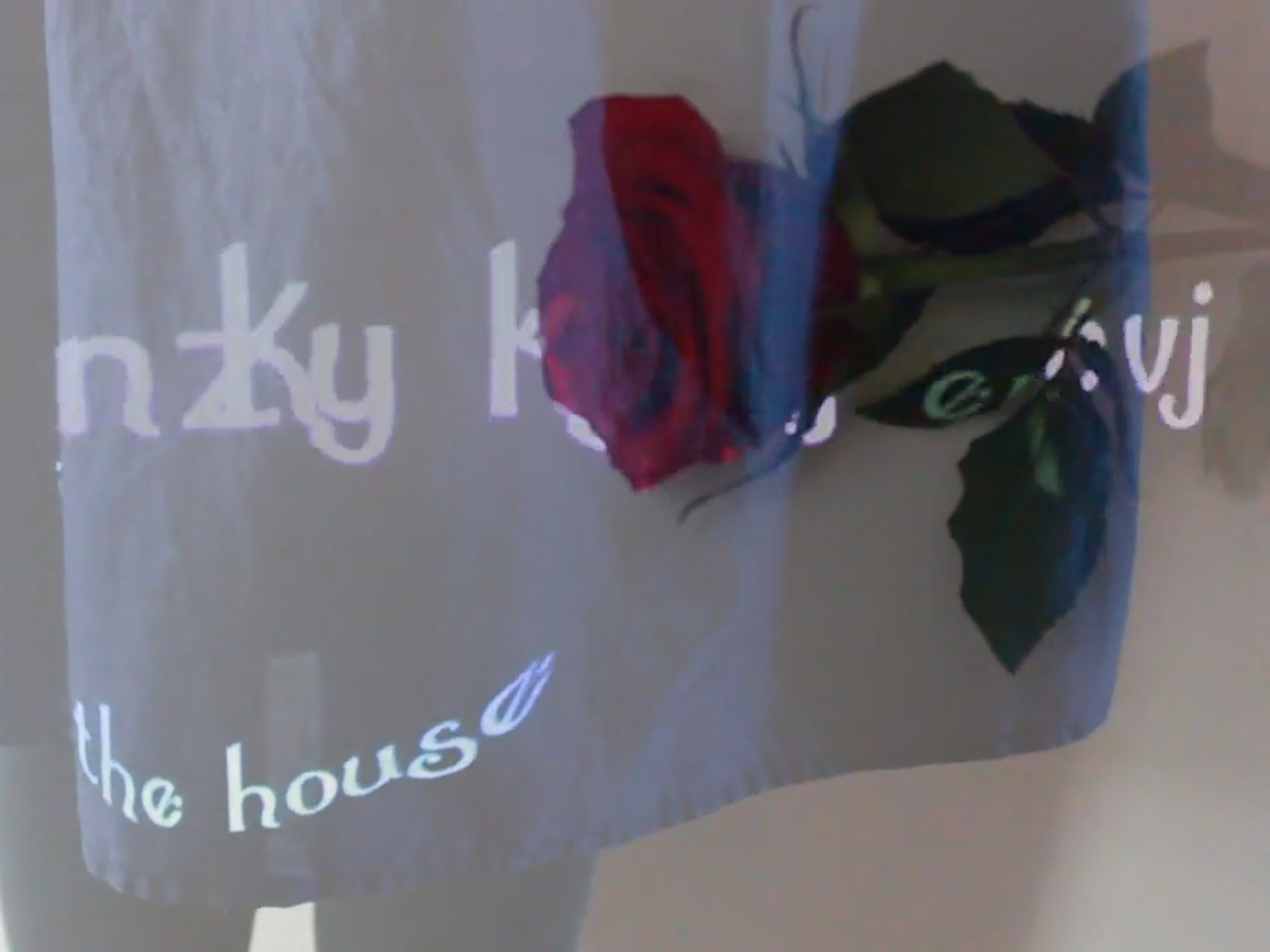Death Fugue and Illuminated Voices
xtine burrough
Death Fugue:
During Holocaust Remembrance Day, an annual campus event where I teach, poems written about the Holocaust—including some written by survivors—are read aloud. Paul Celan’s “Death Fugue” is often read, and has been translated by multiple Arts & Humanities faculty. This work of participatory digital art is another translation of the poem as a participatory embodiment of the text. It was created for more than 200 visitors of this event, many of whom were already familiar with Celan’s poem. In Education for Socially Engaged Art: A Materials and Techniques Handbook, Pablo Helguera defines multi-layered participatory structures. This work falls somewhere between (2) directed participation and (3) creative participation. While the visitor was asked to complete a simple task (level 2), they demonstrated varying degrees of creative commitment (level 3) in their participation.
Beneath the lobby’s stairway, I held a small projector a few feet from a white wall. Visitors willing to participate interacted with a projected work of kinetic typography prepared for this event. Without much instruction, most participants found a way to embody the text, “Death Fugue,” as poetry in motion. While some participants used their bodies, others held the text on rose petals, and some took control of the projector to place the text onto the bodies of others—their children, friends, or colleagues. The final result is a composite video that documents a communal enactment of the poem as a text across many bodies in its construction and interpretation. Interacting with the poem in fragments elicits the temporal space of memory. In the spirit of collaboration and memory-making, the textual bodies were edited to form a cohesive video set to a soundtrack created for this work by Natan Grande.
For ELO, I am submitting the final composite, a digital video with sound. This digital video documents the participatory embodiment of the poem. The theme “(un)continuity” is expressed in this project through its discordant structure of participation, and its re-presentation of the poem by participants.
See Pablo Helguera, Education for Socially Engaged Art: A Materials and Techniques Handbook, New York: Jorge Pinto Books, 2011, pages 14-15.
Illuminated Voices:
Illuminated Voices is an interactive shadowbox charged by the power of human touch. Inside the box are sentiments collected—paid for and collected—from workers on Amazon's Mechanical Turk website. For our artist residency and exhibit, The Laboring Self, burrough and collaborator Sabrina Starnaman paid workers to submit sentiments about their work on Mturk.com. First, we piloted the questionnaire: At the end of the survey we asked the workers if the pay for this task was fair. Once we settled on a wage that seemed fair to us and to the workers in our pilot group, we asked one hundred workers how their digital or “mechanical” work affects their bodies. We also asked workers to trace their hands and send us the tracing as a digital image.
In this interactive shadowbox, the sentiments collected from the workers are stenciled, cut, and almost, but not quite, torn from the page. This tension of nearly being cut from the page yields a multi-dimensional white on white aesthetic. It renders the text difficult to read.
Next to the shadow box is a worker’s hand, cut from wood, and coated in conductive ink. When a participant places their hand on the worker’s hand, a strand of LED lights are turned on inside the shadow box. Thus, the human interaction completes the electronic circuit, and renders the text inside the box legible. A wire from the hand is soldered to an Arduino Trinket, mounted to the back of the frame.
This work makes unheard sentiments from invisible laborers visible through the power of human interaction. Metaphorically, the work suggests that without humanity, new technologies will leave us in the dark. For ELO 2020, this work relates to themes related to “(un)continuity,” such as questions of visibility, social organization in terms of Amazon and its invisible workers on the Mturk.com platform, and the discord between the loudness of the corporate image and the unheard voices of its workers.
About the Artist
xtine burrough’s investigation of emerging technologies uses remix as a strategy for engaging networked audiences in critical participation. Appropriation, juxtaposition, and computation are central to her practice as a hybrid artist. She plays at the intersection of media art and digital poetry.
burrough values the communicative power of art-making as a vehicle for exploring the boundaries between humans and the technologies they create, embody, and employ. She collaborates with diverse populations from students to senior citizens to virtual factory workers. Her projects yield multiple layers for various forms of participation in the creation of poetic moments of tactical media. She archives her work and process to further articulate the relationships between what she makes and does with how she thinks about technology and culture in articles, chapters, and books. burrough uses remix and appropriation as strategies for activism and speaking back to structures of power; and she has edited volumes and portfolio sections for other artists to write, reflect on, expose, and archive their practices.
xtine burrough is Area Head of Design + Creative Practice in the School of Arts, Technology, and Emerging Communication at UT Dallas, and Creative Director of LabSynthE, a laboratory for developing synthetic and electronic poetry.
